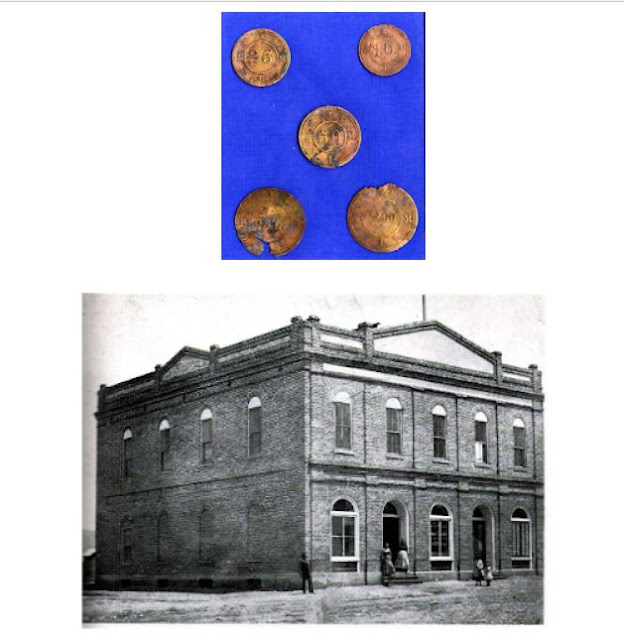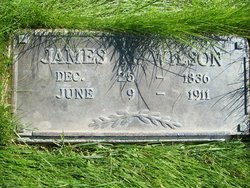Herald Vance
Fairview, Utah 1988
I hear the laughter of children. I hear the sometimes jovial, sometimes serious, and concerned
conversations of adults. I hear music. I hear mischievous pranks giddily planned by energetic young
people.
I hear the solemn silence of reverence. Other sounds also drift through my century-old memory:
the creak and clatter of wagon wheels over a rutted, rocky road; the heavy clop-clop of horse hooves;
rhythmic sounds of a carpenter’s saw and hammer; the high-pitched ping of a rock mason’s chisel; sighs of
fatigue; and proud comments of accomplishment. There are also the thousands of identifying odors that
pleasantly linger, springtime and the changing seasons, the turning of the soil, fresh-sawn lumber, storm,
new-mown hay, dust, rain, sweat, paint, food in various forms, perfume, animals, and coal-oil lamps.
Who am I? I’m a proud old building. I’ve served various purposes and seen many changes. In fact,
my very own structure and location have been changed. In reality, I’m not even the same building I started
out to be. But I am very proud of my ancestral roots and clung to those roots with every fiber of my stately
structure.
It all started about 1894, when the old pink-red brick, two-room Milburn school house, located
below the mouth of Dry Creek Canyon was built. Its design was most prominently expressed by two large,
arched entryways, above which appeared one the word “Boys” and the other, “Girls” These entryways
contained coat hooks around the walls and steps leading up into the two large rooms, one somewhat larger
than the other.
The rooms were divided by massive folding doors which could be opened all the way to
create an unrestricted hall for social events. There was also a teacher’s room near the front between the
arches. The children of Milburn attended school in this building through the eighth grade, first through
fourth in the “little room,” and fifth through eighth in the “big room.”
A milestone in life had, indeed, been reached when one ‘graduated’ into the Big Room.
Reading ‘Riting, and ‘rithmetic were pounded into the young heads by able teachers like Rhoda
Davis, Irene Edmunds, Maitland Graham, Marcella Graham, Coquella Jones, Mary Jones, Elva Madsen, Leah
Nielsen, Leland Nielsen, Adriel Norman, Hilda Sanders, Mae Sanderson, Hannah Stewart, Otis L. Stewart,
and Verga Ray Stewart.
While the main purpose of the school was education, there were also lighter, more carefree
moments. The fun times participating in school plays, operettas, Christmas parties, May Day celebrations,
dances, and scores of other events, should not be overlooked. But it should also be remembered that, even
though these activities did provide untold satisfaction, pleasure, and entertainment, they did not take place
without a price. It was not a monetary one, but one paid through inconvenience, determination, and
sacrifice. In the early 1900s, people didn’t hop in a car and motor on down to the schoolhouse.
Transportation was either horseback or horse-drawn wagon, buggy, or sleigh. Upon returning home cold
or wet, in the middle of the night, the team still had to be cared for. The building did not light by the flick
of a switch. Lighting was provided by candles, “coal oil” lamps, and later, gasoline lamps, usually brought in
by some of those attending. If a youngster had to go to the bathroom, it was a long, cold, dark, and
possibly snowy trek to the little house out back. Ahh, for the “good old days.” This building served the Milburn community as both schools and I hear the laughter of children. I hear the sometimes jovial, sometimes serious, and concerned
conversations of adults. I hear music. I hear mischievous pranks giddily planned by energetic young
people.
I hear the solemn silence of reverence.
Other sounds also drift through my century-old memory:
the creak and clatter of wagon wheels over a rutted, rocky road; the heavy clop-clop of horse hooves;
rhythmic sounds of a carpenter’s saw and hammer; the high-pitched ping of a rock mason’s chisel; sighs of
fatigue; and proud comments of accomplishment. There are also the thousands of identifying odors that
pleasantly linger, springtime and the changing seasons, the turning of the soil, fresh-sawn lumber, storm,
new-mown hay, dust, rain, sweat, paint, food in various forms, perfume, animals, and coal-oil lamps.
Who am I? I’m a proud old building. I’ve served various purposes and seen many changes. In fact,
my very own structure and location has been changed. In reality, I’m not even the same building I started
out to be. But I am very proud of my ancestral roots, and clung to those roots with every fiber of my stately
structure.
It all started about 1894, when the old pink-red brick, two-room Milburn schoolhouse, located
below the mouth of Dry Creek Canyon was built. Its design was most prominently expressed by two large,
arched entryways, above which appeared one the word “Boys” and the other, “Girls”. These entryways
contained coat hooks around the walls and steps leading up into the two large rooms, one somewhat larger
than the other. The rooms were divided by massive folding doors which could be opened all the way to
create an unrestricted hall for social events. There was also a teacher’s room near the front between the
arches. The children of Milburn attended school in this building through the eighth grade, first through
fourth in the “little room,” and fifth through eighth in the “big room.”
A milestone in life had, indeed, been reached when one ‘graduated’ into the Big Room.
Reading ‘Riting, and ‘Rithmetic were pounded into the young heads by able teachers like Rhoda
Davis, Irene Edmunds, Maitland Graham, Marcella Graham, Coquella Jones, Mary Jones, Elva Madsen, Leah
Nielsen, Leland Nielsen, Adriel Norman, Hilda Sanders, Mae Sanderson, Hannah Stewart, Otis L. Stewart,
and Verga Ray Stewart.
While the main purpose of the school was education, there were also lighter, more carefree
moments. The fun times participating in school plays, operettas, Christmas parties, May Day celebrations,
dances, and scores of other events, should not be overlooked. But it should also be remembered that, even
though these activities did provide untold satisfaction, pleasure, and entertainment, they did not take place
without a price. It was not a monetary one, but one paid through inconvenience, determination, and
sacrifice. In the early 1900s, people didn’t hop in a car and motor on down to the schoolhouse.
Transportation was either horseback or horse-drawn wagon, buggy, or sleigh. Upon returning home cold
or wet, in the middle of the night, the team still had to be cared for. The building did not light by the flick
of a switch. Lighting was provided by candles, “coal oil” lamps, and later, gasoline lamps, usually brought in
by some of those attending. If a youngster had to go to the bathroom, it was a long, cold, dark, and
possibly snowy trek to the little house outback. Ahh, for the “good old days.”
This building served the Milburn community as both school and Today this building still serves a dual purpose. While it houses a successful small business, it is also
a lovely home with all the charm, character, and comfort that one could ever hope for. Friends and
relatives bask in its warmth whenever they come to call, especially the grandchildren. They think it’s about
the greatest thing this side of heaven.
So you see, my rough-sawn native pine rafters and floor joists, though nearly 100 years old, still hear
music, the conversations of oldsters, and the laughter of children. My Milburn stone quarry foundation
rocks still hear an occasional sigh of fatigue. And my native pink adobe bricks still absorb the many sweet
aromas of the changing seasons and most of the other smells that crowd my memory bank, as well as the
tantalizing odors that drift from the kitchen.
While many changes have taken place during the past
century, some things change very little.
The couple who have called me “home” for the past sixteen years love me very much and cherish
my heritage as they do their own. They are descendants of those hardy founding fathers who helped plant
my roots. Mr. Vance has been associated with me since he drew his first breath nearly sixty-five years ago.
His early teachings, both academic and spiritual, began within my walls at the old Milburn School and at
the Milburn Ward Chapel.
Even though my history goes back a century and holds many memories, I think I kind of like being a
part of this modern age!
Sources: 3
Author’s recollection.
4
These Our Fathers, 1947, p. 120.
5
Ibid
6
These Our Fathers, 1947, p. 121 and Fairview North Ward LDS Church records.
7
Personal diary of Donna Brunger, Milburn, Utah.














































_edited.jpg)








